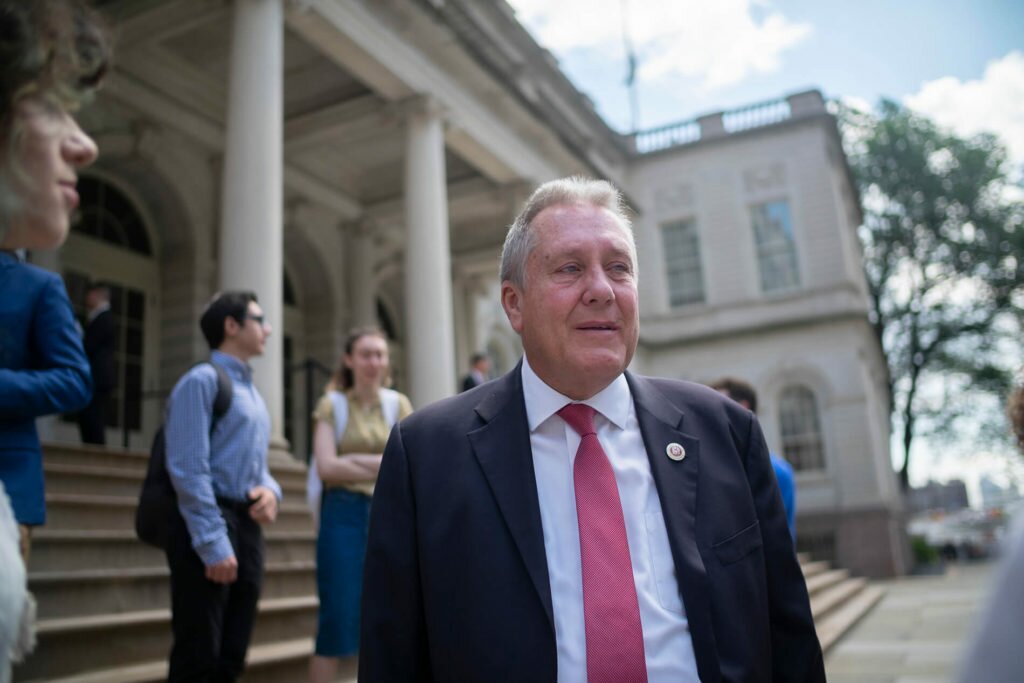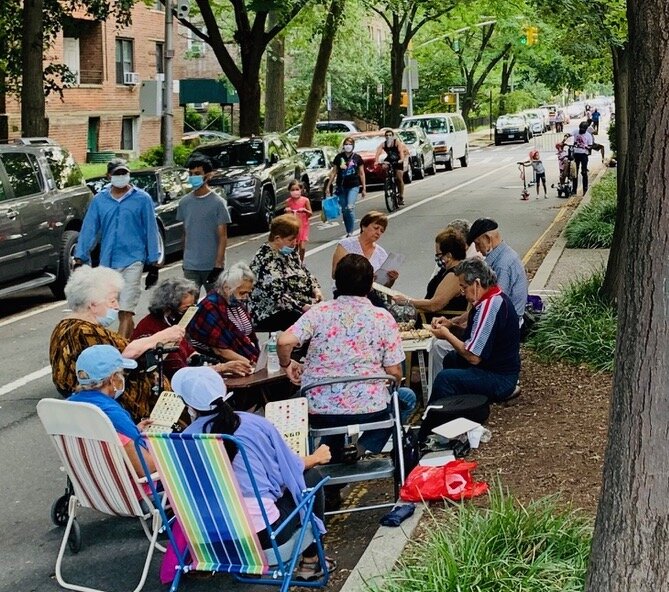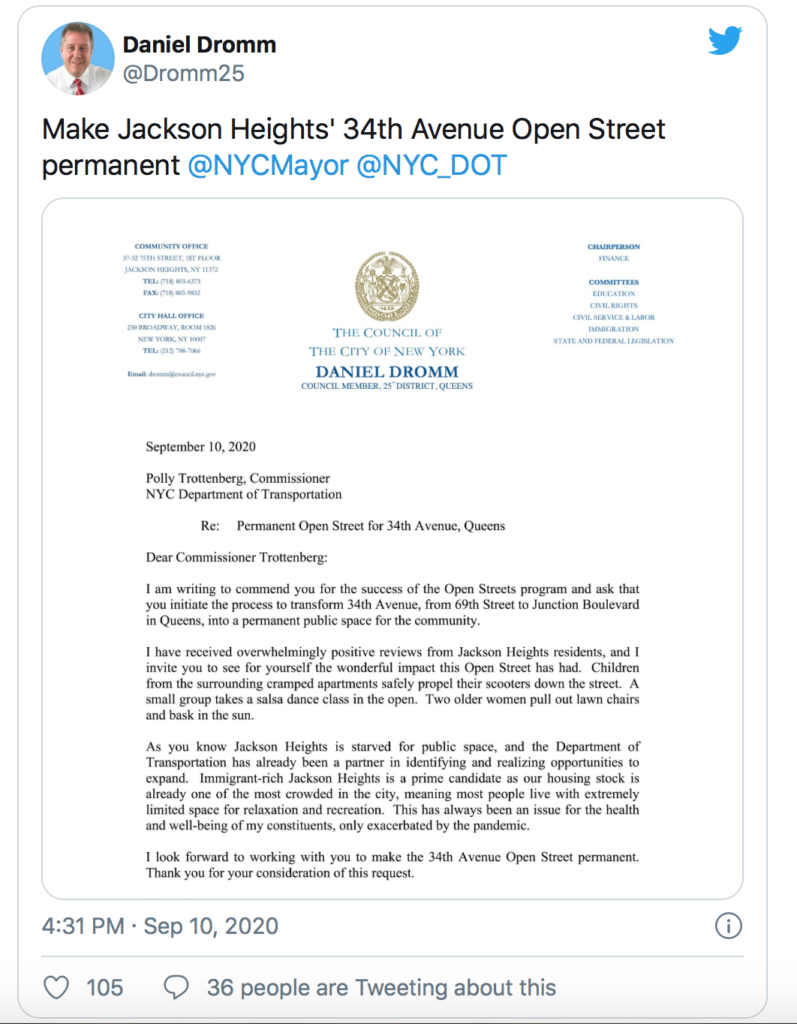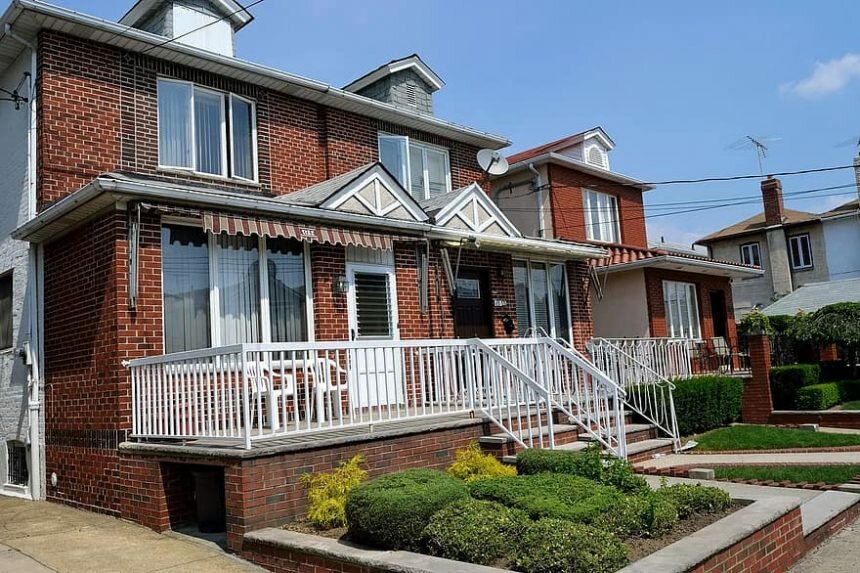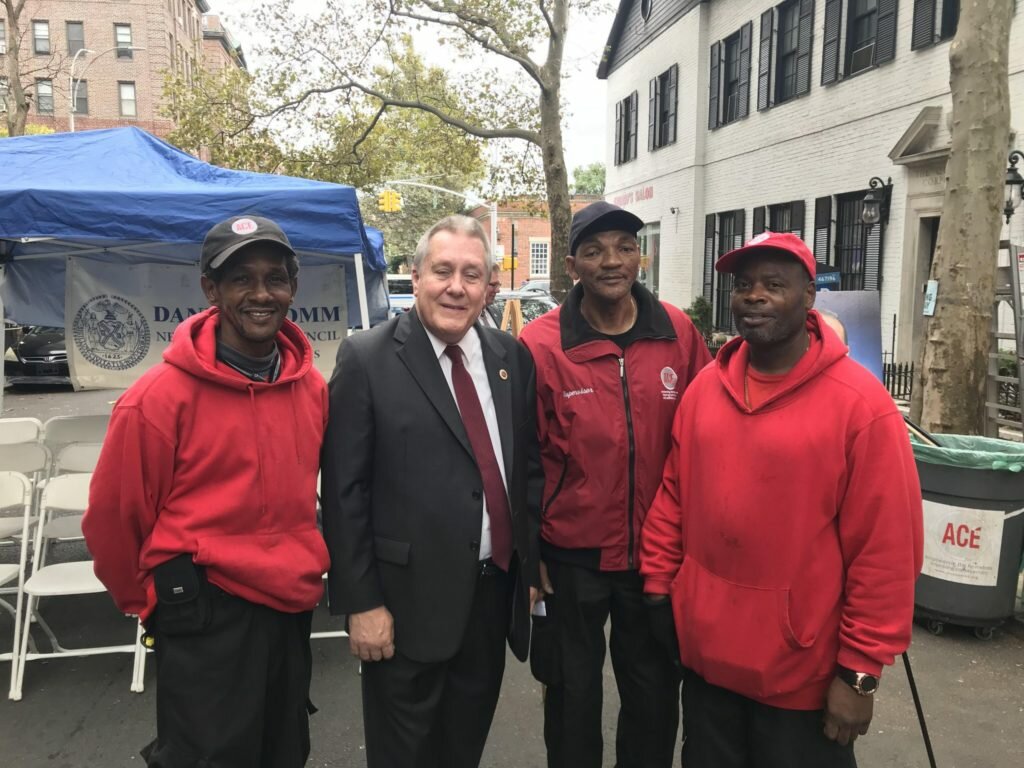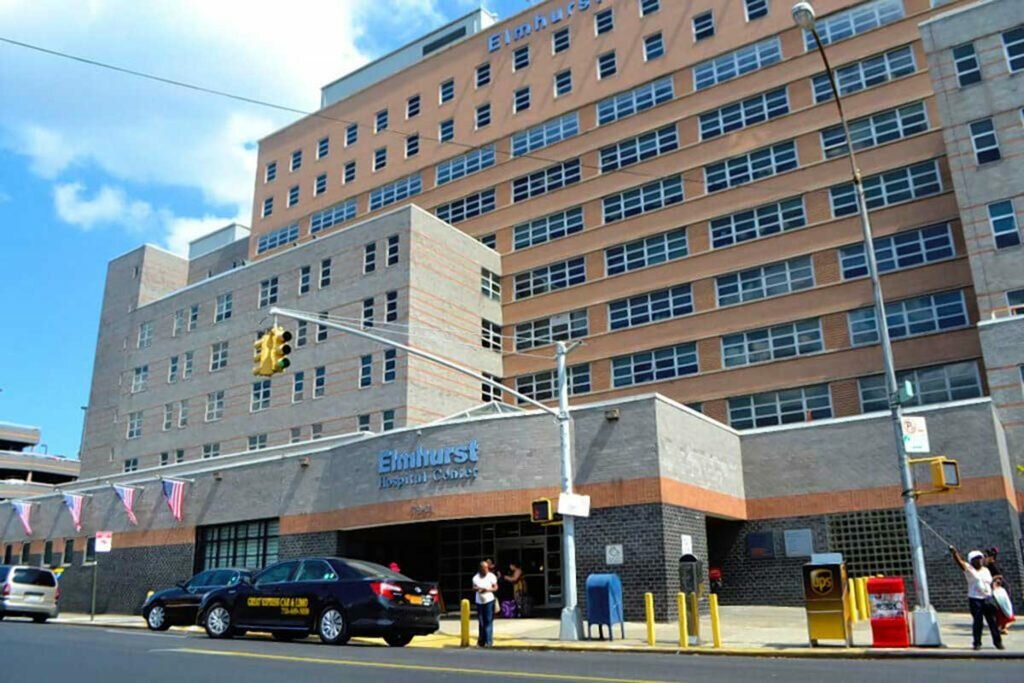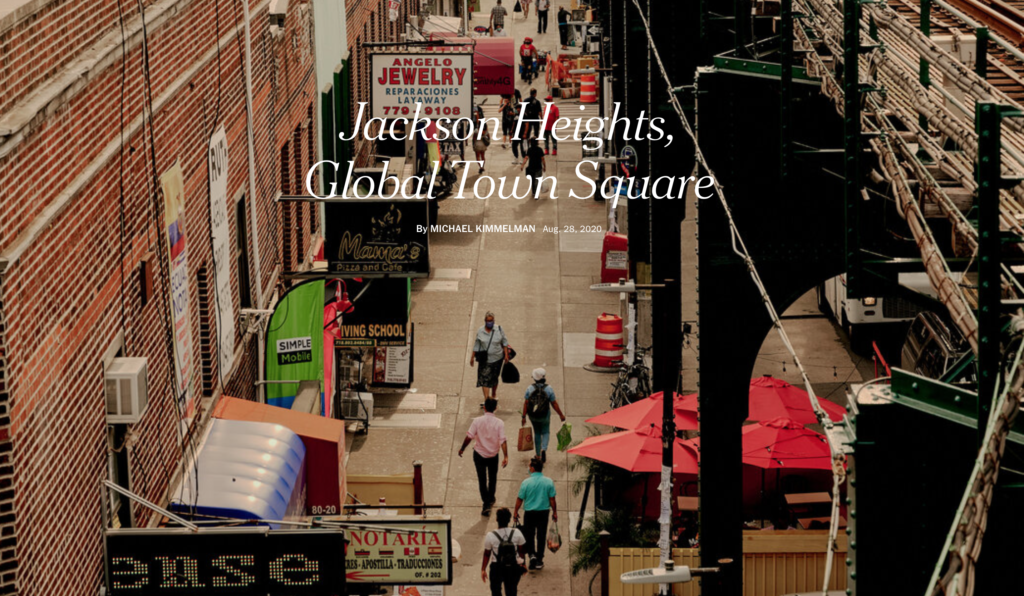
By Michael Kimmelman
Originally published in the New York Times on August 28, 2020
CRITIC’S NOTEBOOK
Photographs by Zack DeZon and Victor Llorente
With a population of around 180,000 people speaking some 167 languages, or so locals like to point out, Jackson Heights in north-central Queens, though barely half the size of Central Park, is the most culturally diverse neighborhood in New York, if not on the planet. The brainchild of commercial real estate developers in the early years of the last century who hoped to entice white, middle-class Manhattanites seeking a suburban lifestyle a short subway ride away, Jackson Heights has become a magnet for Latinos, those who identify as L.G.B.T.Q., South Asians and just about everybody else seeking a foothold in the city and a slice of the American pie.
Suketu Mehta is a New York University professor and the author of “Maximum City: Bombay Lost and Found” and “This Land Is Our Land: An Immigrant’s Manifesto.” What follows is the latest in a series of (edited, condensed) walks around the city.
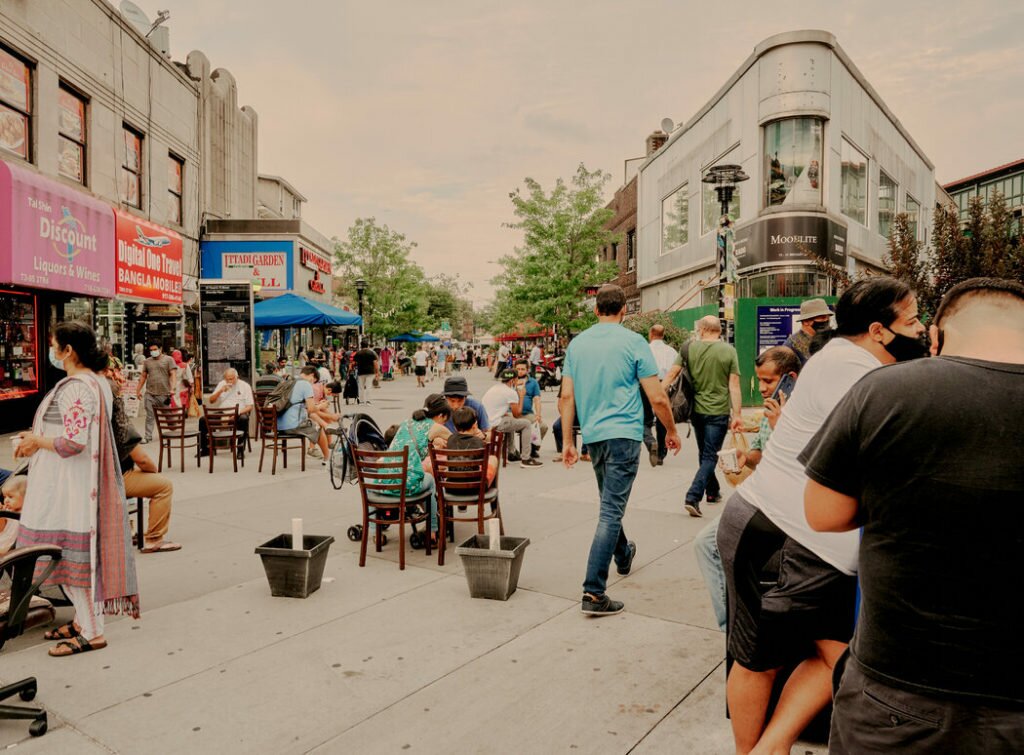
Diversity Plaza has become a proud symbol of Queens as the city’s most international borough.
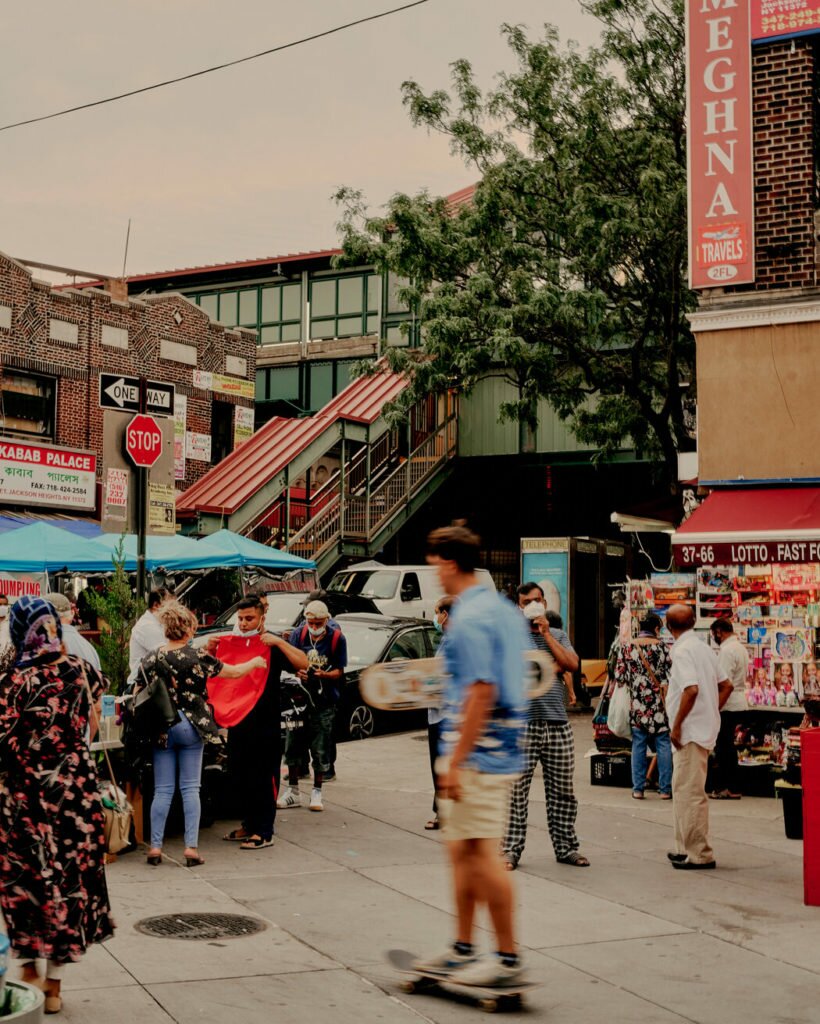
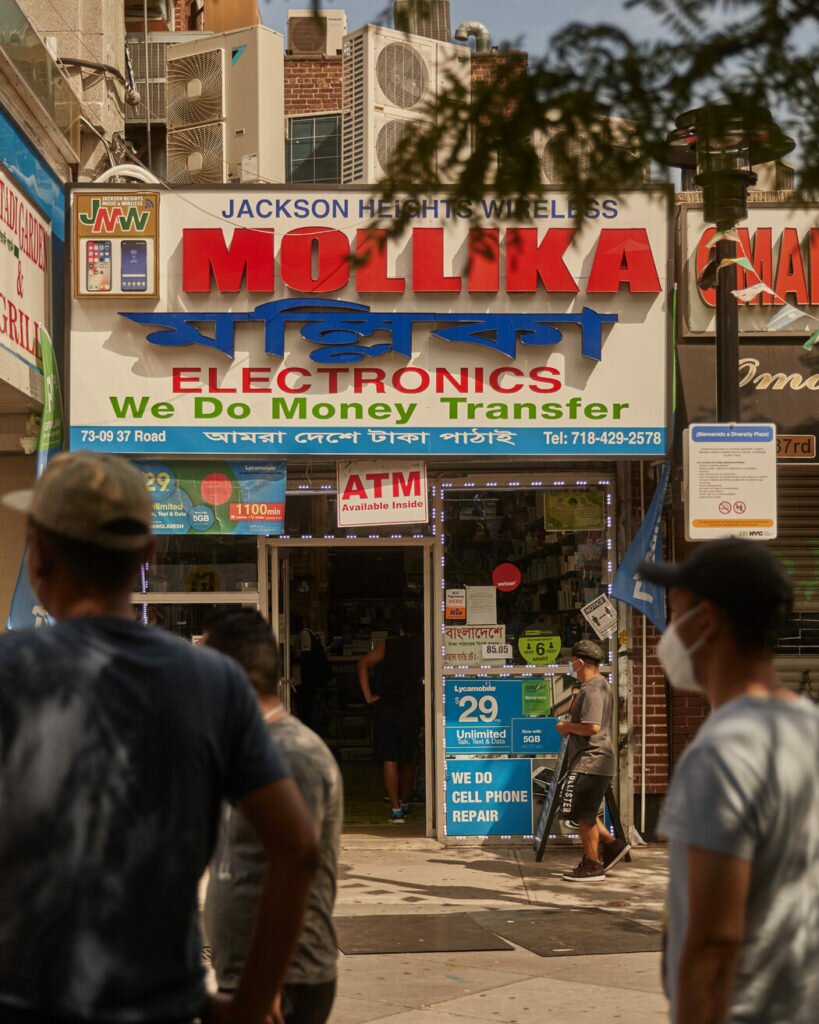
Even by New York standards, Jackson Heights is changing so fast and contains so many different communities that no single walk can begin to take in the whole neighborhood. There’s a booming Latin American cultural scene, a growing Nepali and Tibetan contingent, an urban activist movement, pioneering car bans on local streets. This is Alexandria Ocasio-Cortez’s district, and it is represented by a longtime openly gay city councilman named Daniel Dromm. It was also one of the neighborhoods hardest hit by the Covid-19 outbreak in the spring.
Mehta was born in Kolkata, India and raised in Mumbai. He moved with his family to Jackson Heights in 1977. His parents came to expand the family diamond business. At that time, he was 14 and, like the city, Jackson Heights was going through a rough patch.
He and I “met” the other day (virtually, by phone) at Diversity Plaza, the blocklong stretch of street, pedestrianized in 2012, which has become Jackson Heights’s de facto town square and a proud symbol of Queens as the city’s most international borough. Half a block away, Patel Brothers, the Indian grocer, does brisk business. The plaza attracts tourists coming off the subway, looking for cheap eats, and is a meeting spot for locals, who hang out and debate politics, pick up prescriptions from the Bangladeshi pharmacy, and buy momos and samosas from the shops and food stalls that, cheek by jowl, pack both sides of the block.
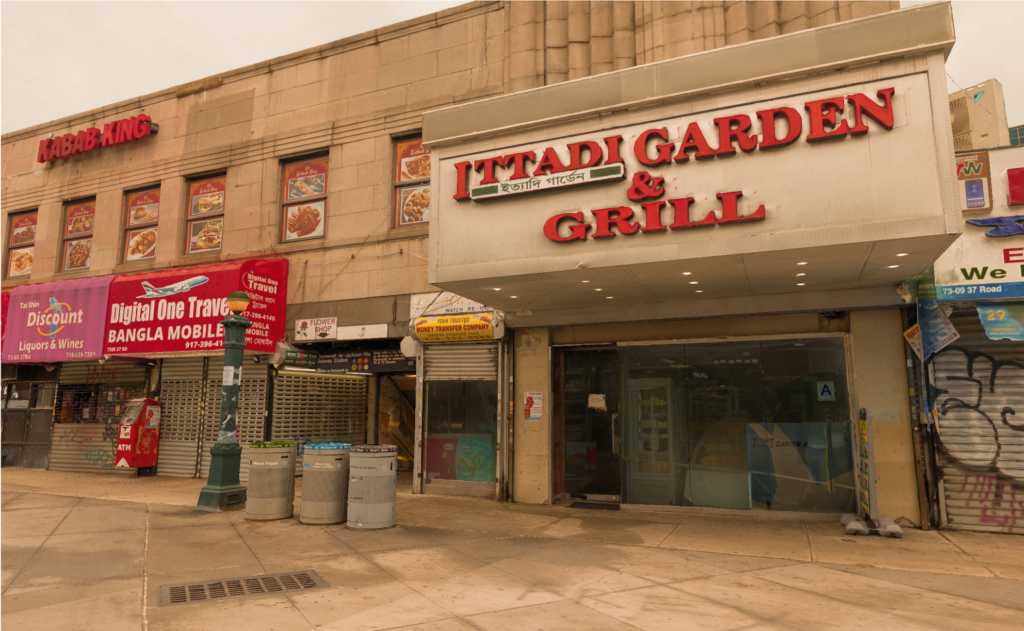
Michael Kimmelman It’s almost miraculous, the effect just closing off a single street to cars has had.
Suketu Mehta If I were Baudelaire, this is where I would do my flâneur thing. For a dollar you can get some paan and eavesdrop.
Paan, the betel leaf.
You’ll notice all these signs around the plaza pleading with people not to spit betel juice.
In vain, clearly.
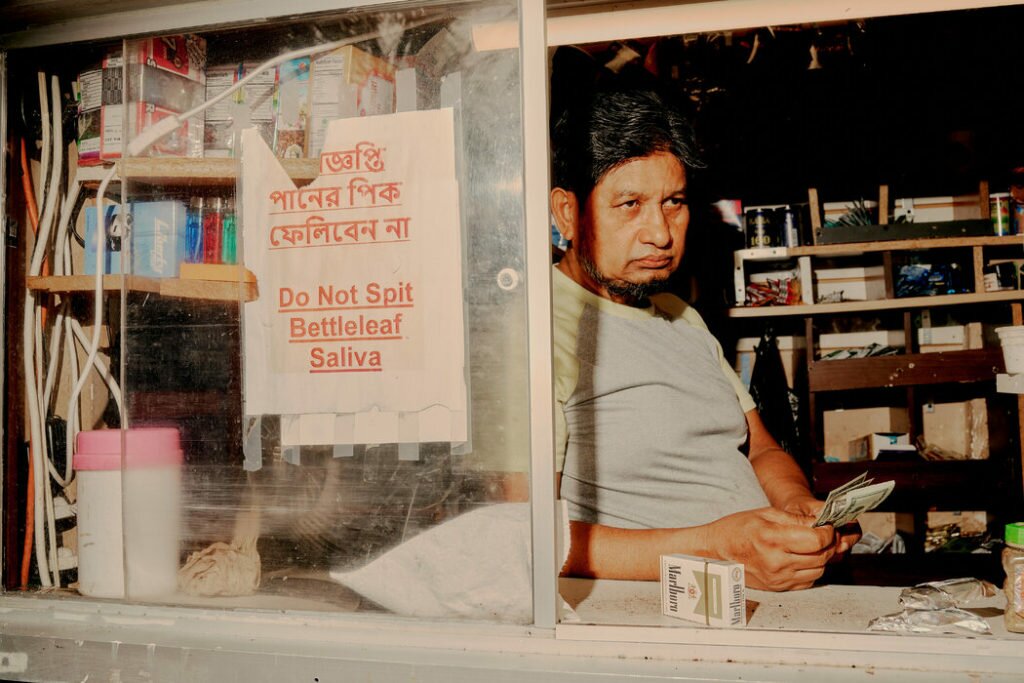
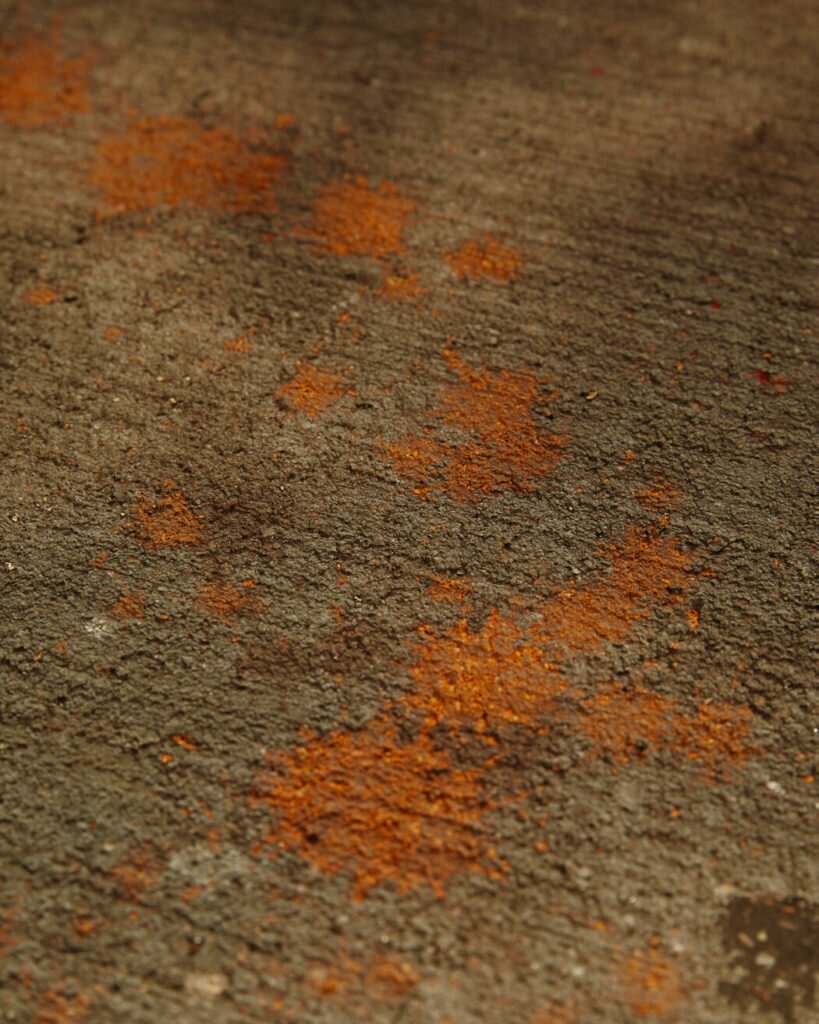
Paan stains on the ground in Diversity Plaza.
As in the homeland, such pleas tend to be honored more in the breach. I also want to point out a food bazaar in the plaza called Ittadi.
Occupying a former Art Deco movie palace from the 1930s.
It was originally called the Earle. When I was growing up, the Earle showed pornographic films. By the ’80s it had turned into a Bollywood theater. The new owners didn’t want to invest in a wholesale remaking of the old Earle sign, so they just changed one letter and renamed it the Eagle. You could see the G was in a totally different font. The Eagle remained popular until video stores around the corner started selling cheap pirated copies of the same films that were showing in the theater. I remember walking into one of those stores with a Bollywood director, Vidhu Vinod Chopra, with whom I had written a script. Without saying who he was, he asked for pirated copies of his own movies. When it turned out there were plenty of them for sale he started yelling at the owners, saying they were stealing his stuff.
So they invited him for tea. They said they were so honored to have him in the store, even though he was yelling at them.

Did they say they would stop selling pirated copies?
Of course not. There was no way they were not going to do that. They said they were selling loads and loads of his films, that he was hugely popular, and he should consider it a compliment.
You grew up near what’s now Diversity Plaza?
On 83rd Street and 37th Avenue, so about a 10-minute walk away and also 10 minutes from Sam and Raj. When my family and I came to America we were told that there were three monuments in New York that every Indian must visit: the Empire State Building, the Statue of Liberty and Sam and Raj, an electrical appliance shop on 74th Street and 37th Avenue, where you could buy both 110- and 220-volt appliances.
Sam and Raj also sold toasters, razors, watches and little pens with digital alarm clocks embedded in them — things Indians would take back home. If you spoke in Gujarati, they wouldn’t charge you sales tax. Every time someone in my family came from India to visit, we had to take them to the fabled Sam and Raj. From the old country they would bring over a cargo of rich silks and exotic spices.
And they would take back, you know, bags filled with cheap electronic knickknacks.
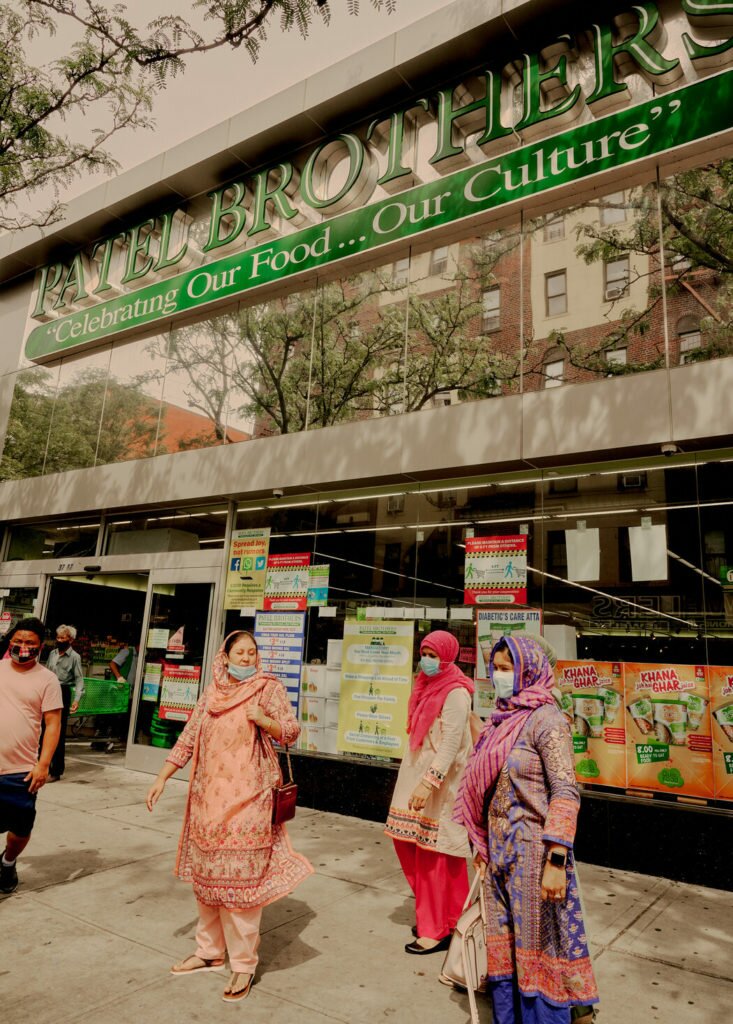


Nearby I remember there was a Burmese grocery store called Mount Fuji (because the owners had lived in Japan). Big freezers contained Burmese river fish and tea leaf salads. Burmese hip-hop played on the TV. This was when Myanmar was under sanctions, so the store had to smuggle everything in from Burma. Burmese people living in Jackson Heights would make trips home and smuggle goods back. Once, I asked a couple of guys in the store what these people would take from Queens to Burma. They said the same thing: “Centrum!”
Apparently Centrum multivitamins were much in vogue in Burma.
Jackson Heights was originally a private development scheme — a kind of City Beautiful with faux French Renaissance and Tudor housing built by the Queensboro Corporation to lure white Manhattanites, but then Jews and L.G.B.T.Q. New Yorkers started arriving by the 1940s, Latinos in the ’50s.
The Queensboro Corporation named it after a descendant of one of the original Queens families and added “heights” because it made the place sound loftier.
Those Latinos who started arriving in the 1950s were mostly Colombians and other South Americans. Today they’re also from Central and North America. After the 1965 Immigration Act lifted restrictions on Asians, waves of Indian professionals, like my parents, started coming.
You didn’t turn out to be suited to the family trade.
No, but I did end up writing what I believe is still the only Jain-Hasidic love story set in the diamond business. It was made into a movie some years ago by Mira Nair, part of a not particularly distinguished omnibus film called “New York, I Love You.” My segment was “Kosher Vegetarian,” starring Natalie Portman and the late, great Indian actor Irrfan Khan. Their love talk was: “What can’t you eat?”
Speaking of cultural mash-ups, just around the corner from Diversity Plaza, if we stand at the bottom of the stairs leading to and from the elevated No. 7 train on Roosevelt at 74th and do a panoramic survey, we can find signs in Spanish, Bengali, Urdu and Hindi. The most interesting signage tends to be on the second floors.
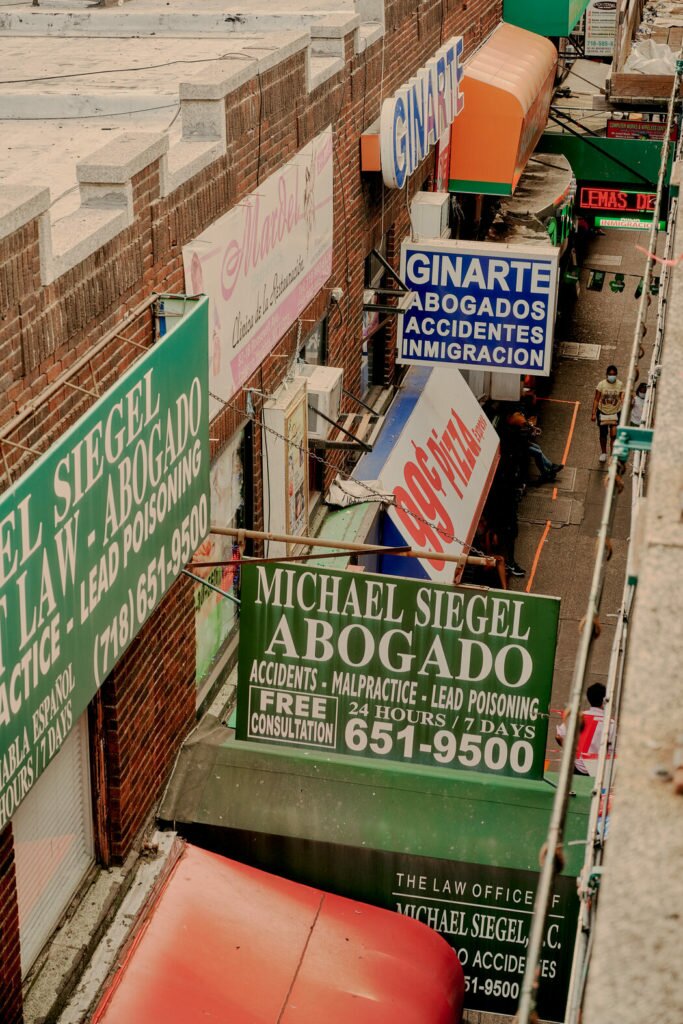
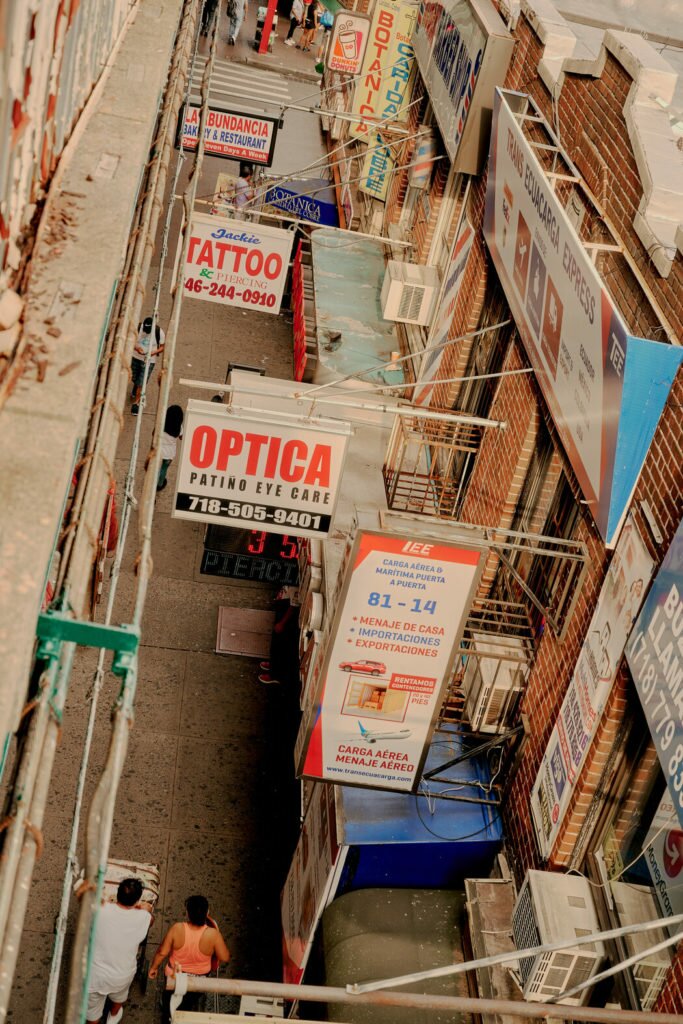
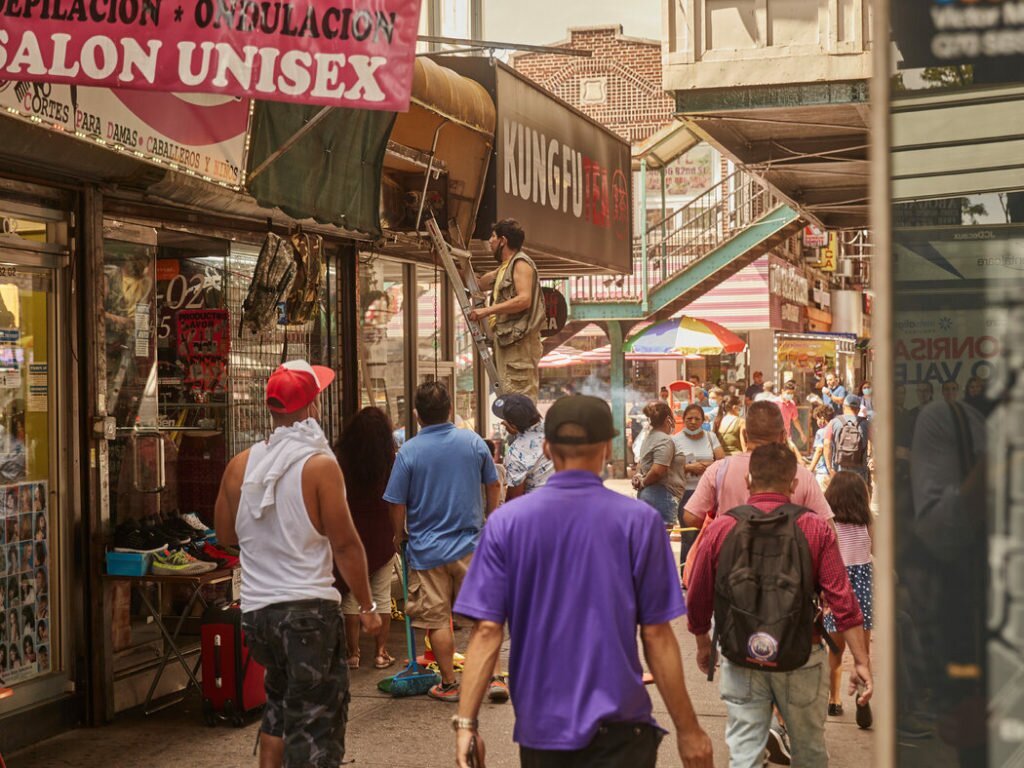
Facing onto the elevated subway tracks?
Right. Those second floors are rabbit warrens of shops and offices. The multilingual signs in the windows advertise businesses that help people in the neighborhood deal with green cards, civil-service exams, driver’s licenses, divorces, funerals and SAT prep. In Jackson Heights recent immigrants don’t always know how to interface with the American system or whom to trust, so when they find a person, someone in one of these places, they’ll often use that person to handle everything.
Then if we walk down Roosevelt Avenue, we come to some of the famous Latino bars like “Romanticos,” which are what used to be called taxi dance halls.
Henry Miller wrote about taxi dance halls in the 1920s.
They flourish in Jackson Heights as “bailaderos” — places men can go to have a beer in the presence of somewhat skimpily dressed women and pay a couple of dollars extra for a dance. Like the men, the women are mostly migrants, from all over Latin America. I’ve gone to these bars. Typically, a guy comes in, a woman comes up to him, she’s dressed in a short skirt, they start chatting. Soon they bring out their phones to show pictures of their families back in the Dominican Republic or Mexico and coo over each other’s kids before they get up to grind on the dance floor. For a few dollars, their loneliness may be briefly assuaged.
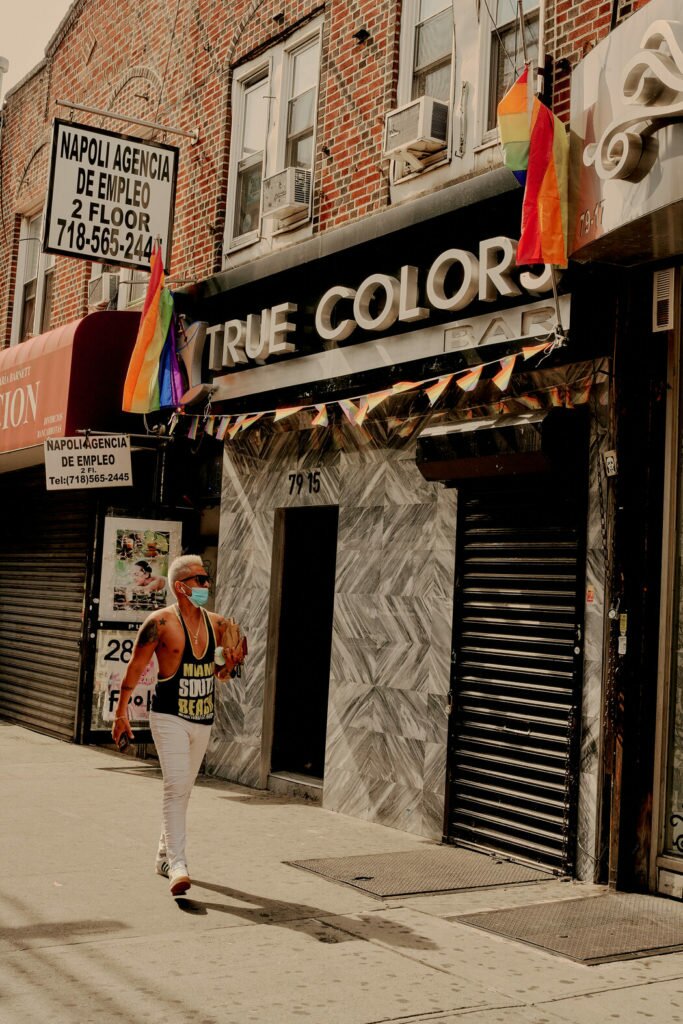
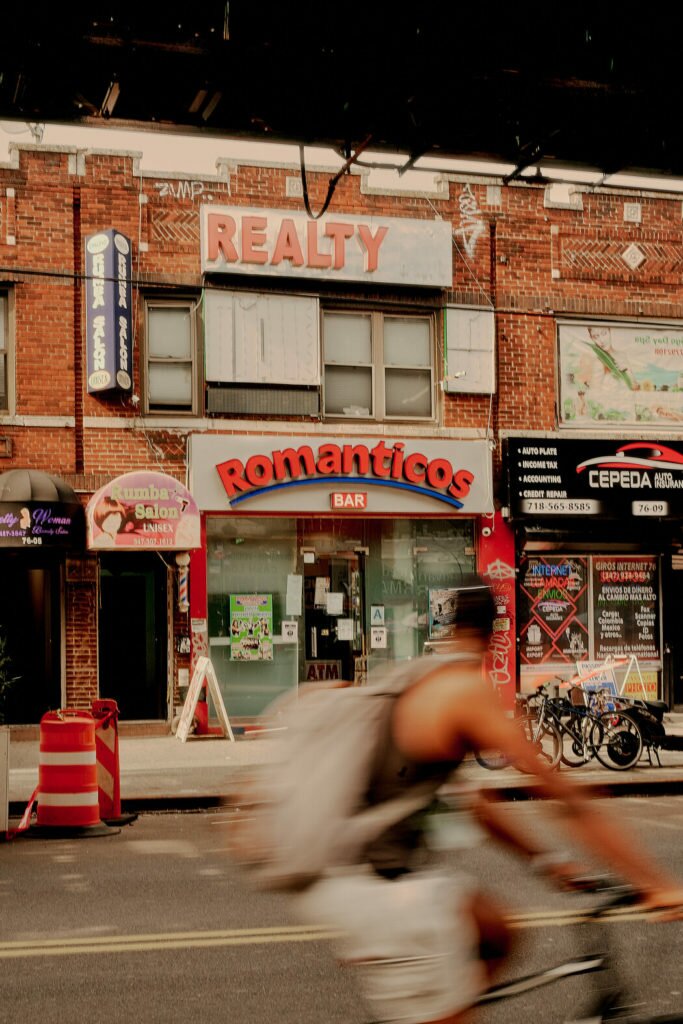
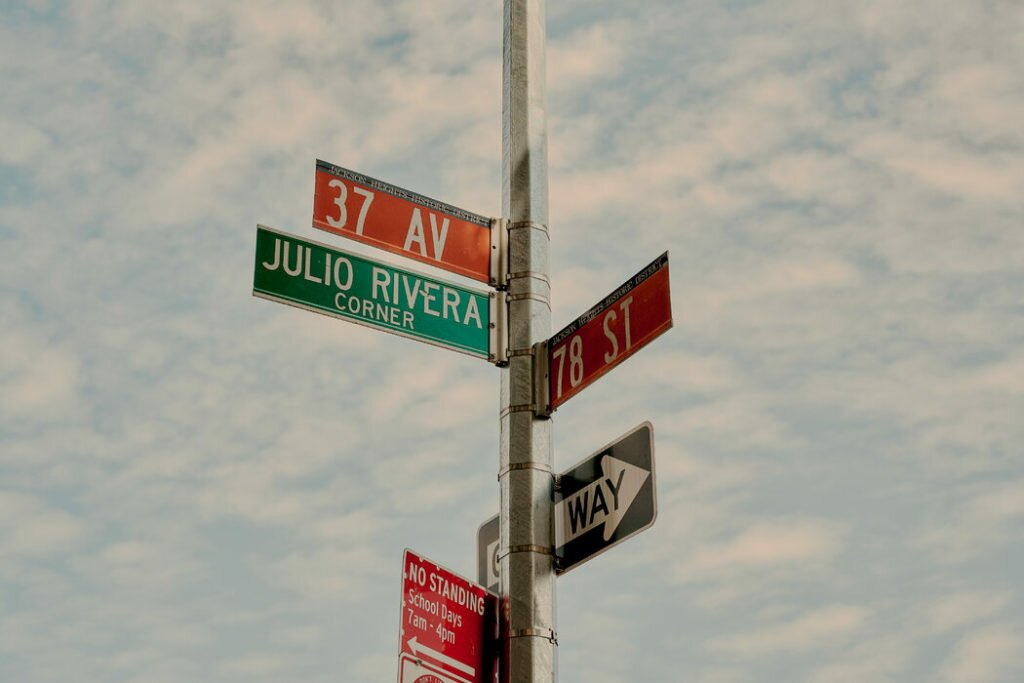
A corner named after Julio Rivera, a gay man who was beaten and killed in 1990.
There’s an L.G.B.T.Q. bar scene on Roosevelt Avenue, as well.
The city’s biggest concentration of Latino L.G.B.T.Q. bars and nightclubs is in Jackson Heights. As far back as the 1920s, gays from Manhattan started coming to the neighborhood, and now Jackson Heights hosts the city’s second-biggest Pride parade — an amazing thing considering this is home to some of the city’s most conservative religious communities, like Bangladeshi Muslims and Latino Catholics.
I grew up among these people. My parents sent me to an all-boys Catholic school. The teachers called me a pagan and I learned to run very fast.
There was a notorious hate crime in Jackson Heights back in 1990. Julio Rivera, a 29-year-old gay bartender, was lured to a public schoolyard, beaten and stabbed to death by skinheads.
The corner of 78th Street and 37th Avenue is now named after Rivera. My younger sister went to that public school, P.S. 69. That this neighborhood should end up hosting the city’s second-biggest Pride parade seemed impossible back then. But I think because Jackson Heights is so ethnically diverse, people have gradually become accustomed to accommodating what you might call another spice in the mix, ethnically and sexually.
Diversity breeds tolerance.
I don’t like the word tolerance because it implies sufferance. I prefer to describe it as a lowering of people’s guards at a time when the neighborhood and the city in general have become safer, which means there is less fear and more room for curiosity.
But it’s also a product of sharing the same space. I like to use the example of the building where I grew up, at 35-33 83rd Street. When I lived there — and the situation is no different now — the owner was Turkish. The super was Greek, the tenants were Indians and Pakistanis, Dominicans and Puerto Ricans, Muslims, Uzbeks and former Soviet Jews. People who had been killing each other just before they got on the plane for America were living next to each other. And every Sunday morning, the entire building rang to the glad sounds of Bollywood songs on “Vision of Asia,” which was a program broadcast on a Spanish-language television station. Dominicans, Indians, Pakistanis and Russians in the building all sang along.
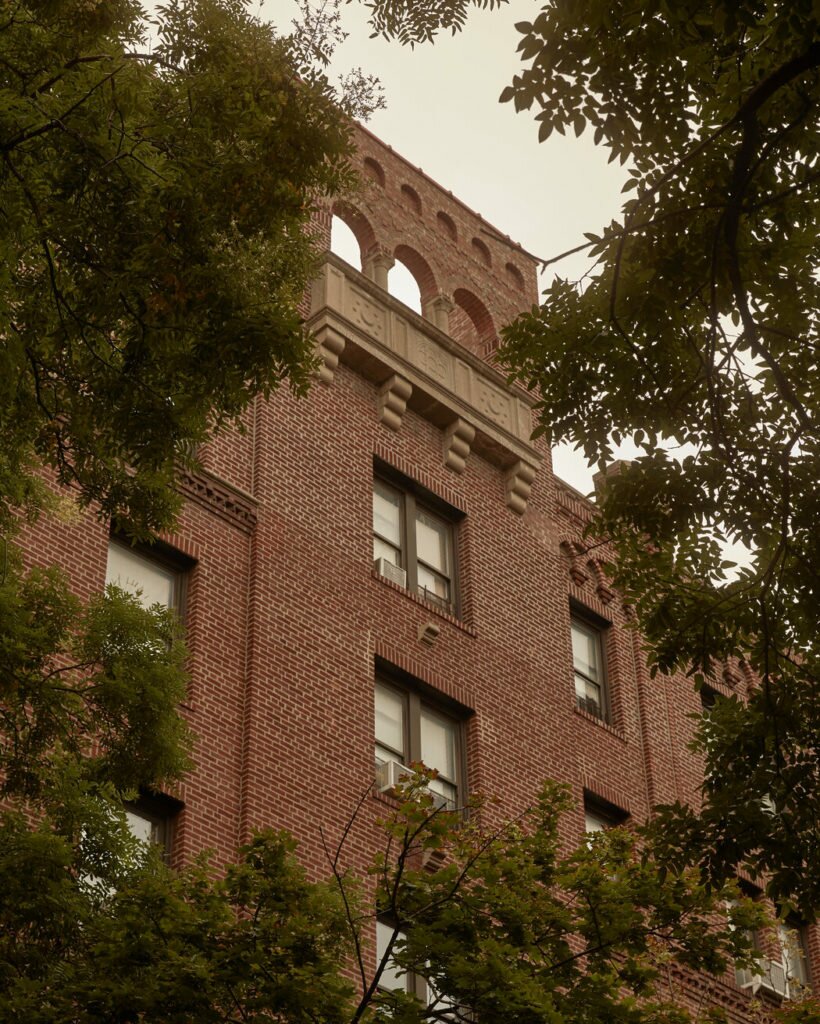
Suketu Mehta grew up at 35-33 83rd Street.
Don’t get me wrong. It wasn’t that we were all one big happy family and loved each other in our colorful eccentricities. We often said horribly racist things about each other.
But we were all immigrants trying to make a life in the New World, some of us sending money back to the most hateful organizations in our home countries. But here we shared food, because Hindus and Muslims both like samosas. Here, hate crime laws, as extremists learned, were enforced much more than they were back home, so fear of the law mitigated some of the worst impulses.
And children played together on the street, or in each other’s backyards, which meant parents got to know about all these other cultures through their kids. My sister’s best friend was the Greek super’s daughter, which is how we learned about pork chops seasoned with oregano, and how they learned about Gujarati vegetarian food like dhoklas.
You mentioned sending money home, the remittance economy.
Jackson Heights is of course home to a large number of undocumented residents. There seems to be tacit understanding that civil authorities won’t enforce certain rules and codes too strictly. Informality allows the system to be permeable, meaning that someone who lives here may not need to produce a Social Security card to rent an apartment or get a job. They can earn enough to pay the rent and also send money home. So along Roosevelt Avenue there are all sorts of stores that cater to the remittance economy. Last year, migrants around the world sent over $554 billion home.
More than three times the amount of development aid dispensed by wealthy countries, according to the World Bank, although the pandemic threatens to reduce remittances significantly, with scary ripple effects on global poverty.
Remittances may be tiny — $50, $100 — but the money goes directly to the grandmother for medical treatment or the sister who needs to pay her school fees. It bypasses governments and government corruption. If we really want to help the global poor, I think we need more money transfer places like the ones on Roosevelt Avenue.
Roosevelt Avenue isn’t the official commercial drag of the neighborhood.
No, that’s 37th Avenue, a block north, where you will find the “sidewalk ballet” that Jane Jacobs celebrated, with mom and pop stores where the mom and the pop are actually outside, standing on the street, watching kids play.
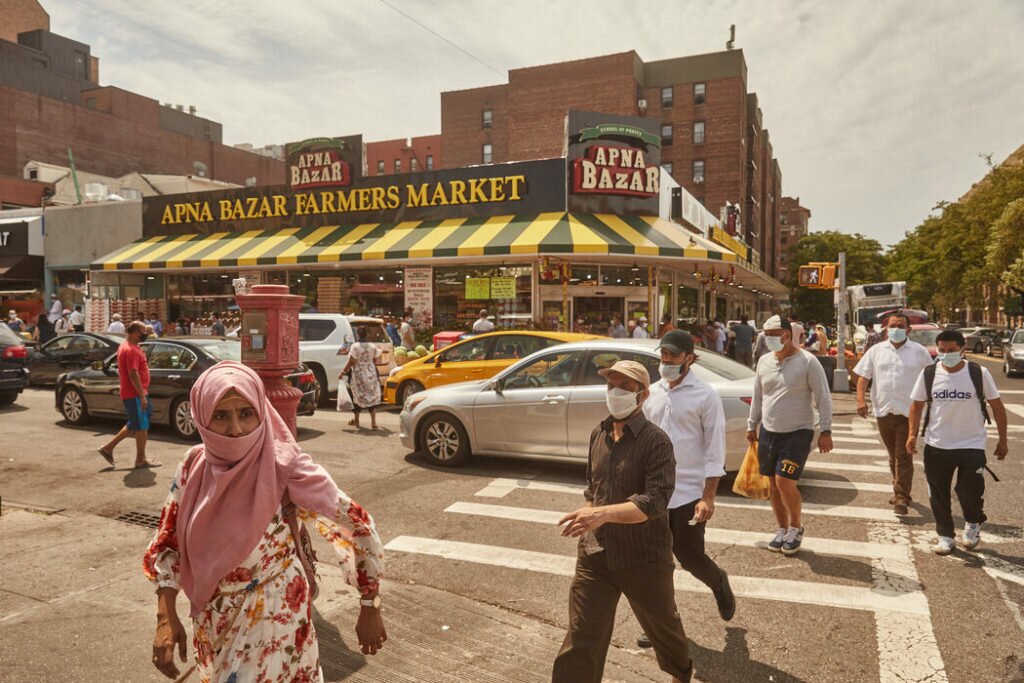
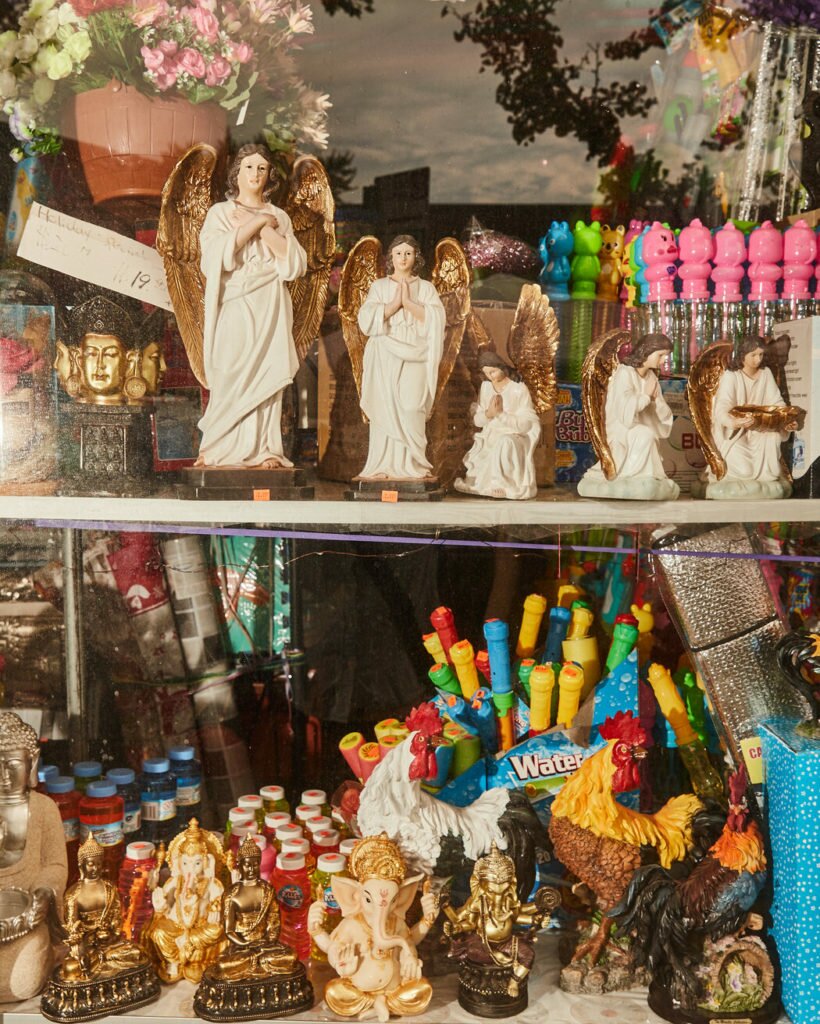
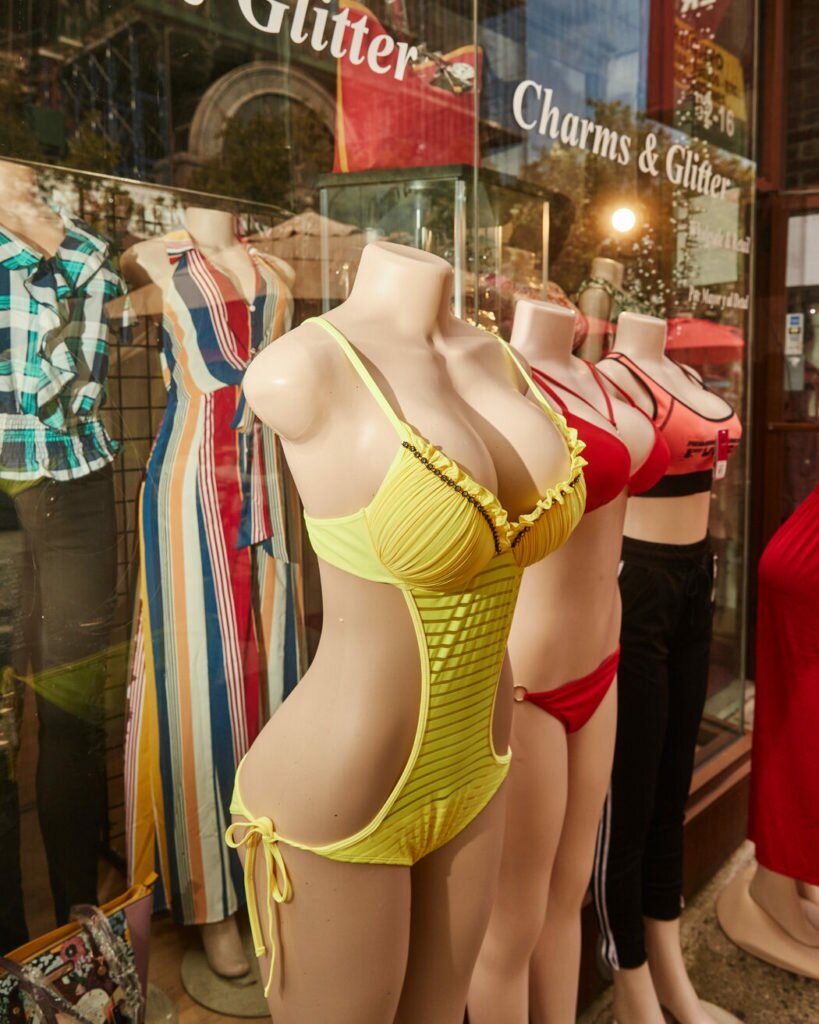
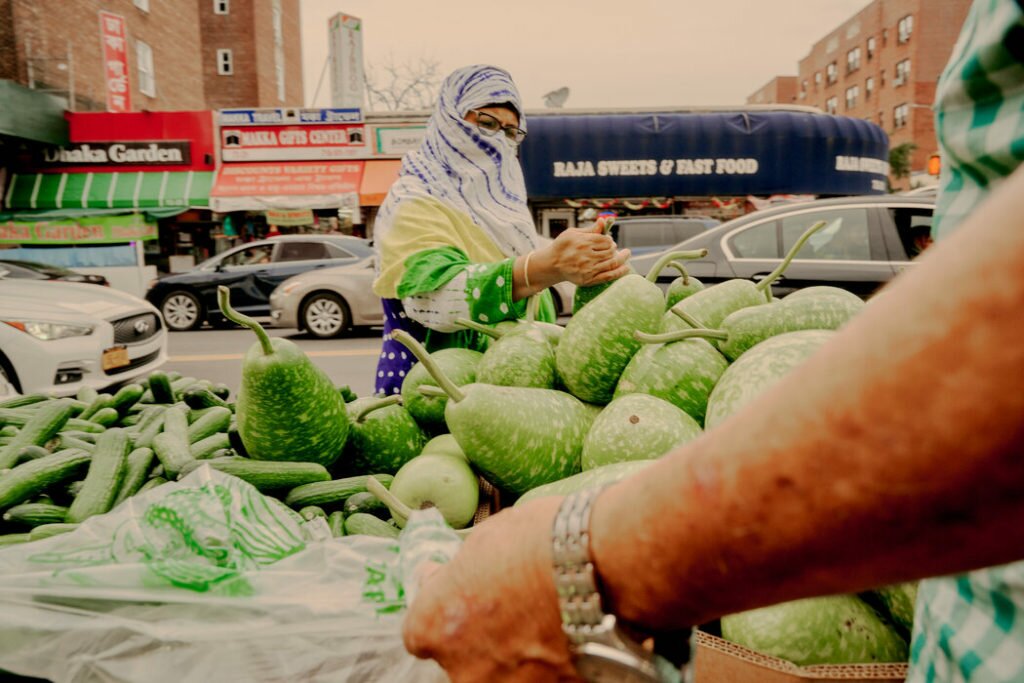
The avenue is an incredibly lively, vibrant scene — not messy and seedy like Roosevelt Avenue — with everything from Korean grocers and gourmet cheese and wine shops for the yuppies who are gentrifying Jackson Heights to Brazilian and Colombian boutiques selling jeans and lingerie with fake bundas.
Fake what?
Bundas. Padded butts. And then you have the discount suits on display at the old-time men’s wear stores, which in my day sold outfits you might recall from “Saturday Night Fever.” When I was a student at N.Y.U., my father took me to one. I had told him I was going on my first date. He kind of stared at me, then took me to one of these stores and very loudly announced to the salesman: “My son has an important social occasion coming up.” He bought me a three-piece suit.
How lovely.
It was highly flamboyant, with a heavy polyester component.
How did the date go?
She was a Dominican woman from Brooklyn. I fell madly in love. We saw a Broadway show and she somehow managed to suppress her laughter at the sight of a skinny little Indian from Jackson Heights in a three-piece polyester suit.
You mentioned the G word earlier. Increasingly, the neighborhood has attracted young bankers and tech workers who like having the ability to choose between pupusas and parathas for dinner.
As Amanda Burden, the city’s former planning commissioner, likes to say, gentrification is like cholesterol: There’s good gentrification and bad gentrification. For Jackson Heights, it’s a good thing that there is diversity of income as well as of ethnicity. But big garden apartments that used to sell for $300,000 now cost closer to $1 million, which has had the effect of forcing more and more immigrants into basement apartments.
We’ll get to the basement apartments. The garden apartments first. You’re talking about ones the Queensboro Corporation built to entice middle-class Manhattanites.
Right — places like the Chateau on 81st Street. My younger sister’s best friend lived there. It’s in what is now the neighborhood’s designated historic district, which includes some of the loveliest housing in all five boroughs, constructed mostly between the 1910s and the 1950s. The buildings have pretty slate roofs and all kinds of architectural details, with blocklong interior gardens that you can’t see from the street, which was the point. They’re private gardens. At the Chateau, the garden was designed by the Olmsted brothers, I believe.
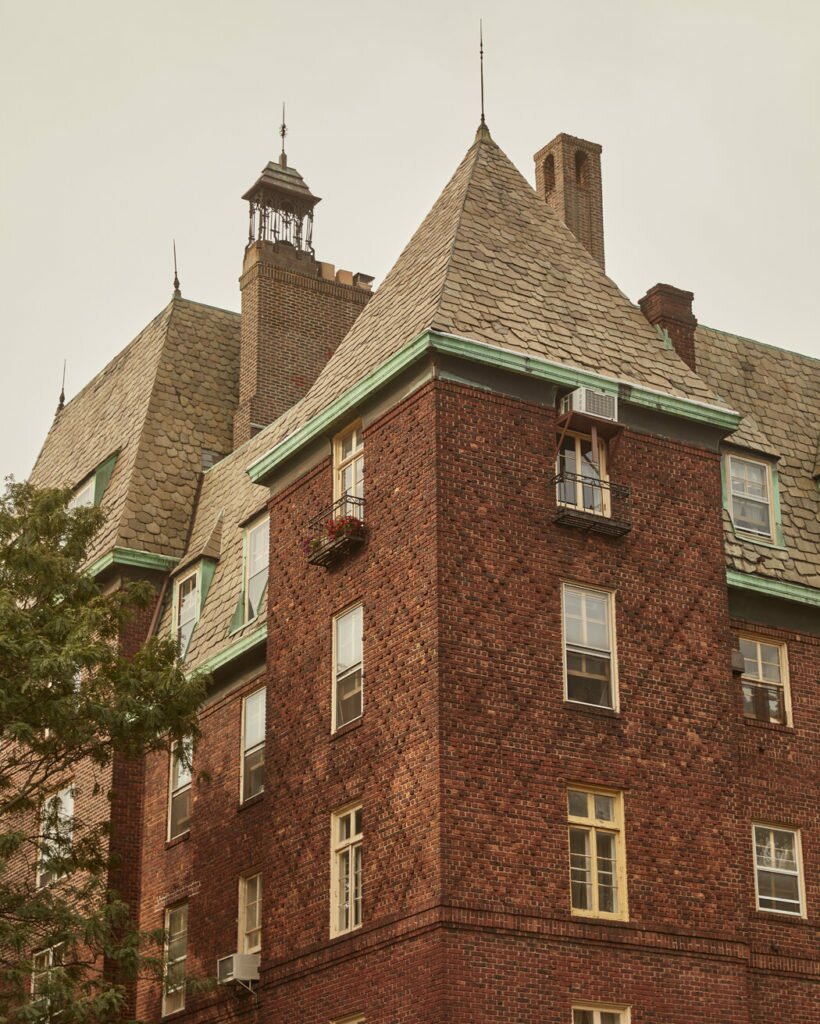
The Chateau is part of the historic district of Jackson Heights.
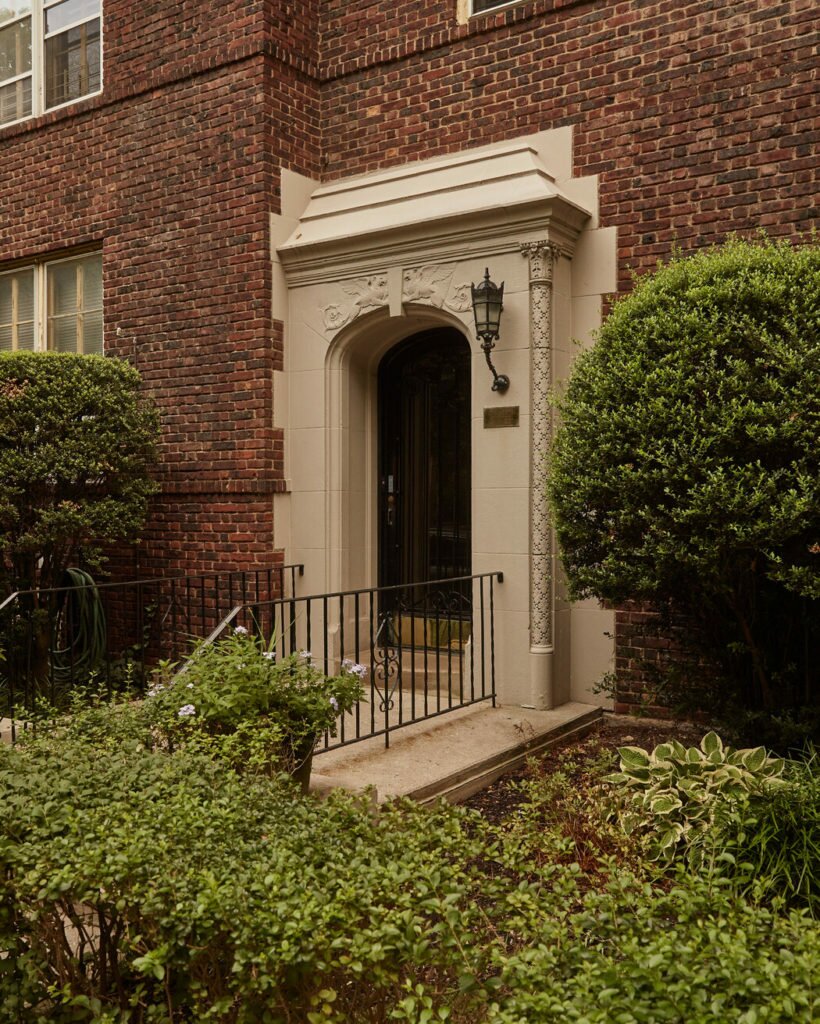
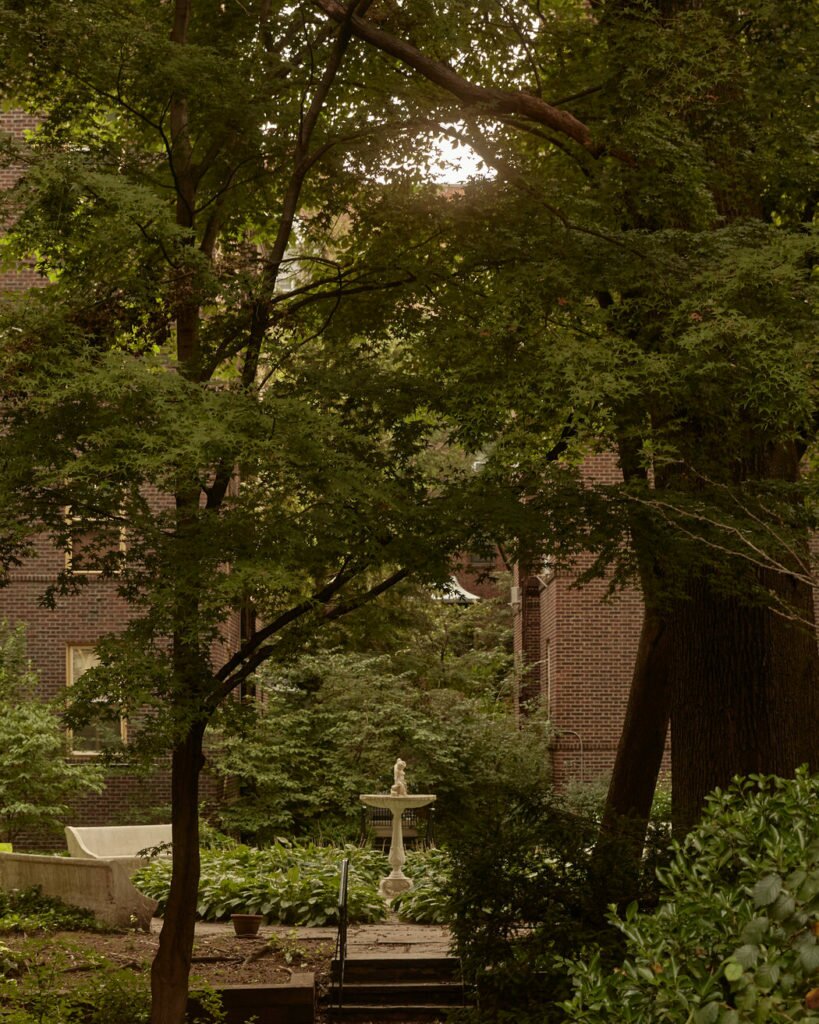
And gentrification is producing new developments like Roosevelt Parc.
A residential tower, around the corner from Diversity Plaza, by Marvel Architects.
With rooftop lounges, a movie room and a yoga lawn that rent for thousands of dollars a month. In Jackson Heights, the issue around gentrification isn’t just the rent. It’s the fact that a potential tenant at a place like Roosevelt Parc needs to produce all kinds of documents to apply for an apartment. That kind of documentation, even if you’re legal, can be very difficult for new immigrants who haven’t built up credit histories or developed references.
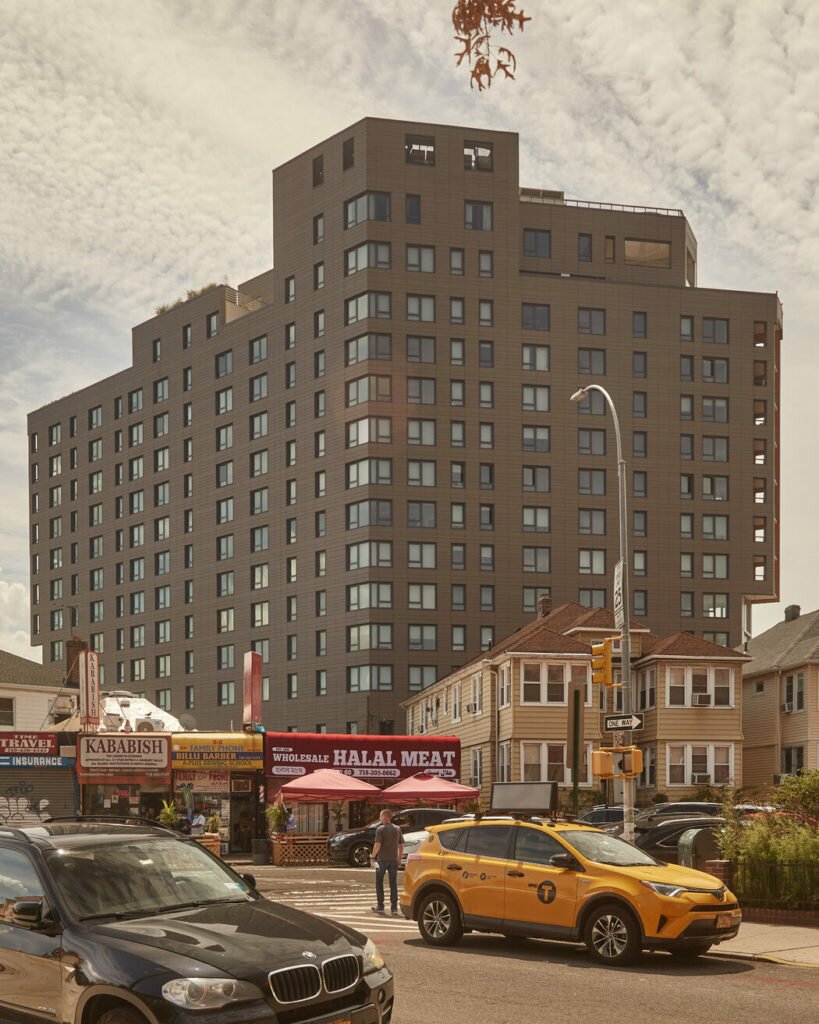
Roosevelt Parc, a new residential building designed by Marvel Architects.
So rising rents and other obstacles push more people into basement apartments.
Yes. The garden apartments are on the north side of 37th Avenue. We can see basement apartments on the south side. These are mostly pleasant, suburban-looking streets with neat two-story frame houses — you wouldn’t know that dozens of people live in the basements unless you notice the number of mailboxes and satellite dishes. Sometimes you can guess who lives there. I don’t know why but Trinidadians and Guyanese seem to prefer white steel gates.
Inside, the rooms are all occupied by different people, and the basement might have hot beds, meaning cubicles where people share the same bed in shifts. I’ve been in many of these basements. There’s a perception they’re fire traps, and some are, but usually, with just a few fixes, they could be brought up to code.
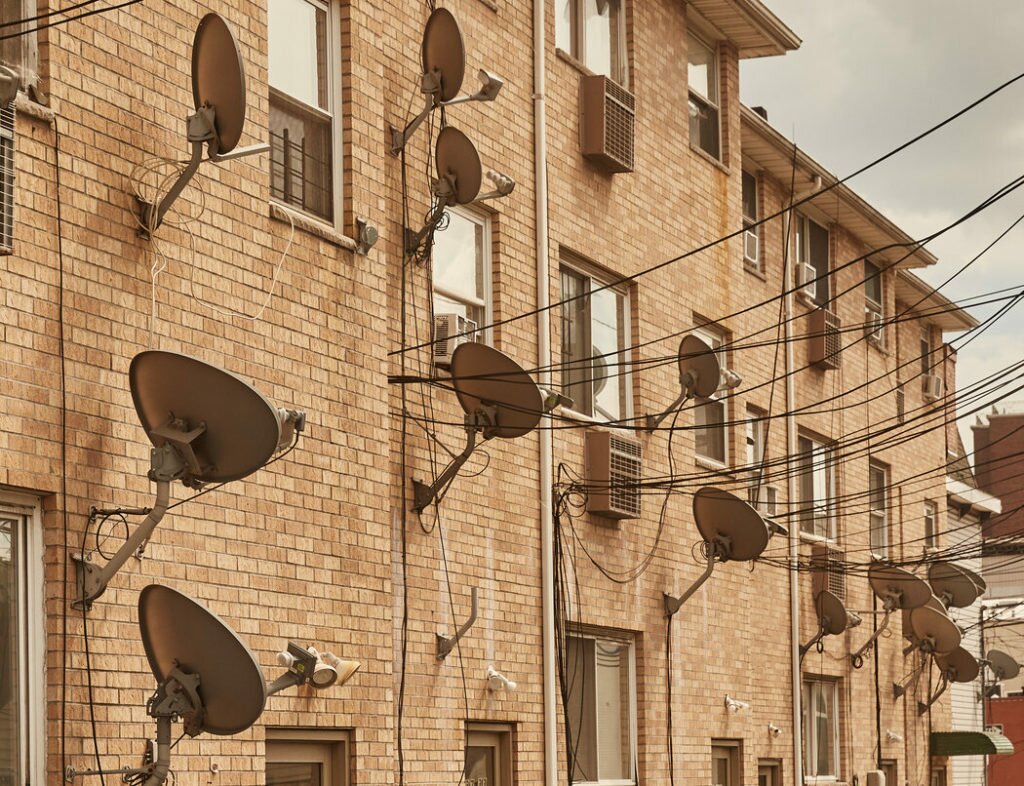
The city certainly needs more affordable housing. But even if landlords spent the money to upgrade them, New York, unlike, say, San Francisco or Seattle or Los Angeles, doesn’t seem anxious to legalize lots more “alternative dwellings,” as they’re called.
The city has fallen behind the curve. I think landlords would spend the money. Most of the landlords are immigrants themselves who would have a much easier time getting mortgages if they were able to show that the rents from these basements were legitimate income.
How do you think the pandemic will change things?
It’s an open question whether gentrifiers will continue moving into the neighborhood or whether they’ll now prefer to leave the city for places like Hudson, N.Y. But the taxi drivers and delivery guys who share the basement cubicles don’t have the luxury of teleworking. So they’re not going anywhere.
And where are we going next?
A block from The Chateau, I wanted to point out Community United Methodist Church. There’s a street sign at the corner commemorating the invention of Scrabble, which was played in the church in 1938. It was the invention of a Jackson Heights resident (an unemployed architect) named Alfred Butts. Legions of Scrabble devotees now make pilgrimages to the church, which you will notice also advertises services in Punjabi, Urdu, Bahasa, Korean, Chinese and Spanish. I love that God is worshiped in so many languages in the house where Scrabble was invented. Brooklyn may be known as the Borough of Churches. But Jackson Heights is where, for example, the Jewish Center, on 77th Street, also hosts Pentecostal services, Hindu services and the annual Iftar celebration of Bangladeshi and other Muslims.

Community United Methodist Church offers services in multiple languages.
That’s rather beautiful.
Look, architecturally speaking, the neighborhood is not Versailles. There are some really unlovely buildings and shabby dwellings in Jackson Heights. But, for me, the area comes down to its people and their stories — and to the surprise and joy you feel walking down a street like 37th Avenue and seeing all the Bangladeshi and Dominican knickknack shops and children’s toys spilling onto the sidewalk, and the people selling sugar cane juice. The neighborhood is an incredibly hospitable place, where a person can come from anywhere, doesn’t necessarily need papers, might have to start at the bottom — literally, in the basement — but can gain a foothold in America.
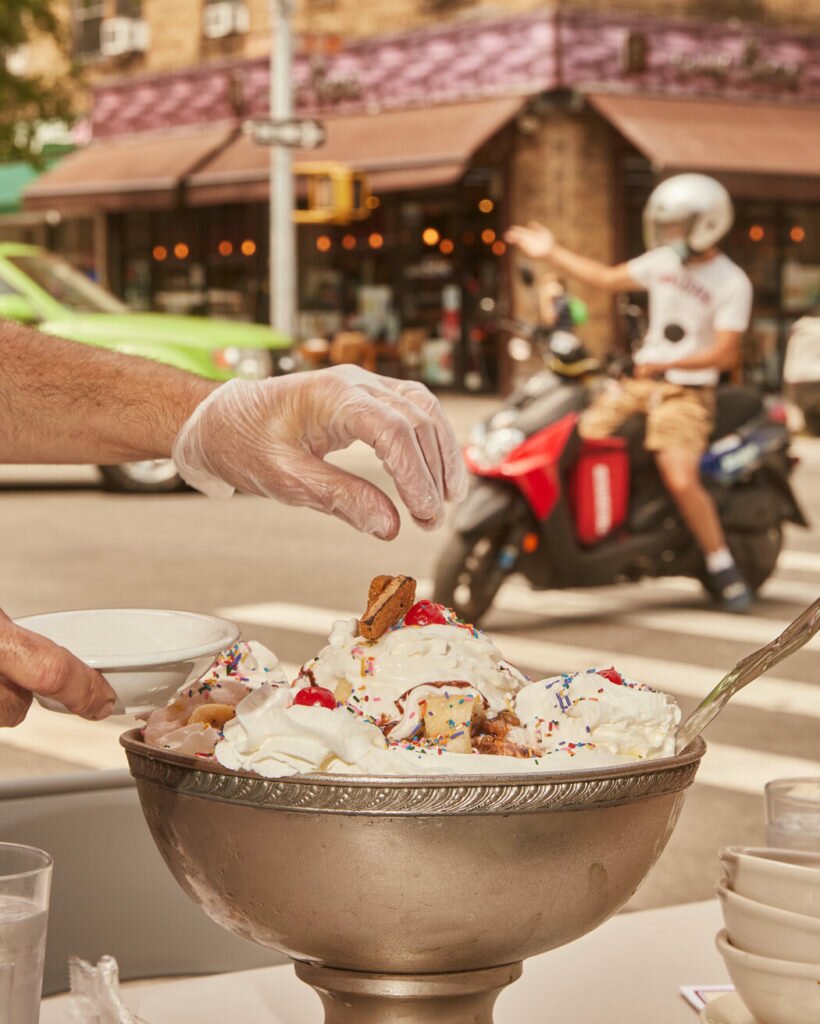
The Kitchen Sink Sundae for eight at Jahn’s.
The American dream.
Speaking of which, I thought we might end at a wonderful ice cream store, founded in 1897, Jahn’s, which I used to go to with my family. The signature dish is the Kitchen Sink Sundae for eight.
I’ve seen a video of that sundae on YouTube. It’s the size of a punch bowl. Is that what your family ordered?
Of course, not long after we arrived. And that’s when we realized: This is the promise of the New World. We have found it. It’s the Kitchen Sink Sundae for eight.
Read more here.
